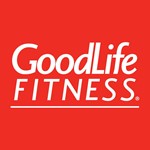As a mechanical engineer and owner of his own consulting firm, Martin Friedman used to travel halfway around the world in a week for client projects before he retired. When he looks back at his work routine, he recognizes now the stress of his job may have been affecting his heart health.
“I’d leave Toronto on a Friday night to fly to London, then to Dubai, with a quick visit to Morocco to see my clients, all in a week, it was very stressful. I didn’t eat properly. I couldn’t get enough sleep and there was no time for exercise. Over time that kind of hectic lifestyle takes a toll.”
Since retiring, Martin has been in hospital twice for cardiac failure. In 2014 he experienced complete blockage in one of his arteries that had to be addressed with a chemical procedure and a stent. During that time, doctors found his aortic valve was narrowing.
Martin was enrolled in the Cardiovascular Prevention and Rehabilitation Program at the Peter Munk Cardiac Centre and Toronto Rehab Institute under the leadership of Dr. Paul Oh, GoodLife Fitness Chair in Cardiovascular Rehabilitation and Prevention. He built up his exercise endurance and went for an echocardiogram every 6 months, hoping for the best.
Then the worst happened. In February 2020, Martin had no energy, he kept blacking out and had trouble breathing. After seeing specialists and undergoing tests, he was diagnosed with severe aortic stenosis. At the time, elective surgeries were cancelled for several months, but Martin underwent open heart surgery in July 2020 for an aortic valve replacement and a blood clot that had formed on the outside of his heart.

He spent nine days in the ICU and two weeks in hospital to recover. During that time, a physiotherapist got him up and walking every day. Martin progressed well and was enrolled in the cardiac rehabilitation program for the second time. When COVID-19 hit, he assumed the program would be postponed.
But in September, program lead Evelyn Foster contacted Martin to register him for a new COVID-19-safe version of the cardiac rehabilitation program. The program adapted to the pandemic with smaller in-person sessions at the fitness facility, complemented by online resources focusing on lifestyle habits, nutrition, medication and exercise.
Dr. Oh says the team adapted very quickly to be able to reach patients through the pandemic.
“It was critical to find ways to keep patients moving and offer care and coaching safely. We were able to offer online resources and contact, along with much smaller groups and less frequent in person visits. We’ve been able to adopt a new approach that will make the program even better moving forward.”
This time, Martin joined a much smaller group of five patients who meet regularly to use the track for walking and exercises. Evelyn takes them through a full workout that includes a warm up, walking, bodyweight and functional exercises and a cool down. She coaches them on form and helps them plan how they will do the workout on their own between sessions. The rest of the time, cardiac rehabilitation patients access online content via Cardiac College, managed by Dr. Oh and his team. They learn about nutrition, healthy habits, how to take their medications effectively and more.
“The smaller group means we get really good coaching. We learn proper form and have lots of space to move and walk. Plus, we’re more comfortable talking and sharing tips and ideas and critiquing each other on our exercises,” said Martin. “I can handle the at-home part on my own and I can watch videos about the exercises to ensure I’m getting them right.”
Martin is walking three miles in less than 48 minutes on a regular basis. You’ll see him most mornings walking the halls of North York Centre, plus he does resistance exercises for his upper and lower body most days. He’s revamped his eating habits and has cut back on red meat.
“I used to fry up a steak and have some fries for a typical meal. Now I focus on lots of veggies and fruits and have almost cut out meat. I’ve learned the principles so I can customize my meals to what I enjoy.”
Martin says he’s feeling much better and his quality of life has improved dramatically. “I have a new lease on life. Now I realize I’m fitter than people much younger than me. My plan is to carry on training. I don’t want to be a sick old man.”

Dr. Paul Oh is Medical Director of the Cardiovascular Prevention and Rehabilitation Program, Peter Munk Cardiac Centre and Toronto Rehab Institute and GoodLife Fitness Chair in Cardiovascular Rehabilitation and Prevention (photo credit Tim Fraser)
